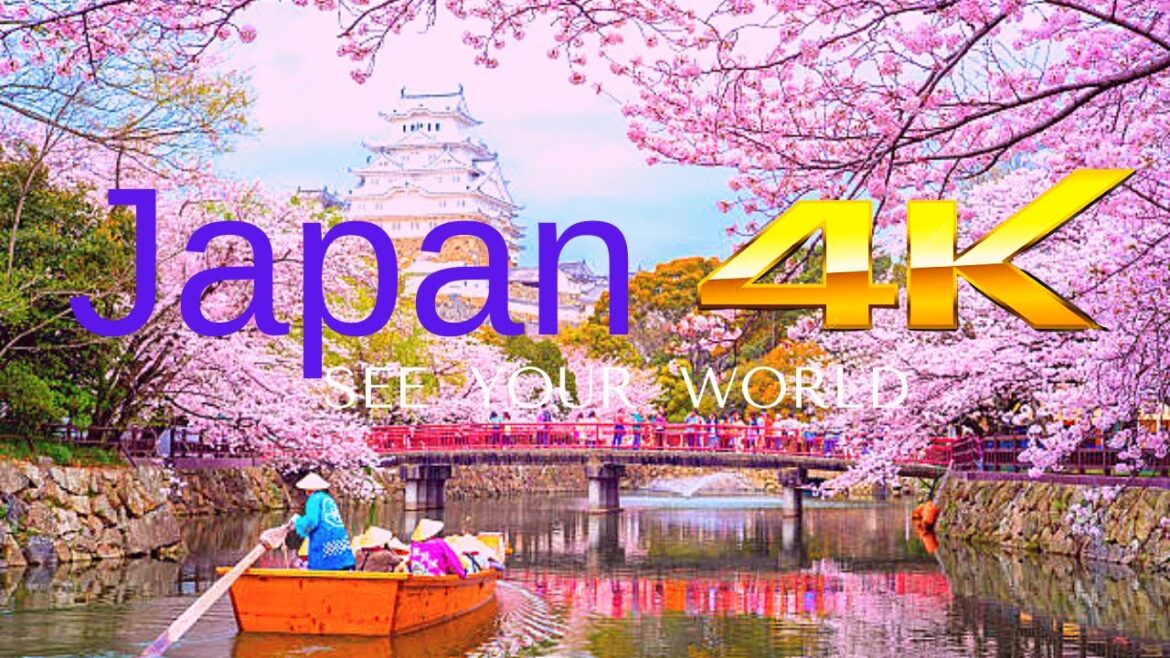#BEAUTY #JAPAN#NEWS
►This 4k DEMO Video is for Entertainment and Educational purposes.
DESCRIPTION:
Japan, an island country lying off the east coast of Asia. It consists of a great string of islands in a northeast-southwest arc that stretches for approximately 1,500 miles (2,400 km) through the western North Pacific Ocean. Nearly the entire land area is taken up by the country’s four main islands; from north to south these are Hokkaido (Hokkaidō), Honshu (Honshū), Shikoku, and Kyushu (Kyūshū). Honshu is the largest of the four, followed in size by Hokkaido, Kyushu, and Shikoku. In addition, there are numerous smaller islands, the major groups of which are the Ryukyu (Nansei) Islands (including the island of Okinawa) to the south and west of Kyushu and the Izu, Bonin (Ogasawara), and Volcano (Kazan) islands to the south and east of central Honshu.Japan is bounded to the west by the Sea of Japan (East Sea), which separates it from the eastern shores of South and North Korea and southeastern Siberia (Russia); to the north by La Perouse (Sōya) Strait, separating it from Russian-held Sakhalin Island, and by the Sea of Okhotsk; to the northeast by the southern Kuril Islands (since World War II under Soviet and then Russian administration); to the east and south by the Pacific; and to the southwest by the East China Sea, which separates it from China. Japan is one of the world’s most geologically unstable areas. The country experiences some 1,000 tremors annually, most of them minor, though major quakes—as in Tokyo-Yokohama in 1923 and Kōbe in 1995—cause considerable loss of life and widespread destruction. Violent volcanic eruptions occur frequently, and at least 60 volcanoes have been active within historical time. Volcanoes born since 1900 include Shōwa Volcano on Hokkaido and Myōjin Rock off the Beyoneisu (or Bayonnaise) Rocks in the Pacific. Among the major eruptions since 1980 are those of Mounts O (1983) and Mihara (1986) in the Izu Islands and Mount Unzen (1991) in Kyushu. The country’s abundant hot springs are mostly of volcanic origin. Many of the gigantic volcanoes are conical in shape (e.g., Mount Fuji), while others form steep lava domes (e.g., Mounts Dai and Unzen). Conspicuous shield volcanoes (broad, gently sloping volcanic cones) are rare, and extensive lava plateaus are lacking. One of the characteristics of the volcanic areas is the prevalence of calderas (large, circular, basin-shaped volcanic depressions), especially in the northeast and southwest, many of which are filled with water, such as Lakes Kutcharo, Towada, and Ashi.In general, Japan’s climate is characterized as monsoonal (i.e., governed by wet and dry seasonal winds). The main influences are the country’s latitudinal extent, the surrounding oceans, and its proximity to the neighboring Asian landmass. There are numerous local climatic variations, the result of relief features. In winter the high-pressure zone over eastern Siberia and the low-pressure zone over the western Pacific result in an eastward flow of cold air (the winter monsoon) from late September to late March that picks up moisture over the Sea of Japan. The winter monsoon deposits its moisture as rain or snow on the side of Japan facing the Sea of Japan and brings dry, windy weather to the Pacific side. The pressure systems are reversed during the summer, and air movements from the east and south (the summer monsoon) from mid-April to early September bring warmer temperatures and rain. Cyclonic storms and frequent and destructive typhoons (tropical cyclones) occur during late summer and early fall, especially in the southwest. Much of the original vegetation has been replaced by agriculture or by the introduction of foreign species to the islands. Semitropical rainforest prevails in the Ryukyu and Bonin archipelagoes and contains various kinds of mulberries, camphor, oaks, and ferns (including tree ferns); madder and lianas are found as undergrowth. In the Amami Islands, this type of plant life occurs only on lowlands, but it grows at higher elevations to the south. There are a few mangrove swamps along the southern coast of Kyushu.
ALL CREDIT GOES TO PIXABAY, Pexels. YOUTUBE.
MUSIC CREDIT :
Song: Ishikari Lore
Artist: Kevin MacLeod
Album: Ishikari Lore
LINK:https://www.youtube.com/watch?v=aPkTBXPar0Q
Copyright Disclaimer
▶ All The Footage Used In The Video Is Licensed.
▶ All The footage Was Edited And COLOUR CORRECTED BY ME
▶ Video Footage Copyright Under Standard License
In this channel, I upload the most surprising places in the world. So if you like these subscribe, stay tuned. You must press the “🔔” bell icon to be notified of new videos.
Please contact us at: rahmanlabib2021@gmail.com
Thanks…

